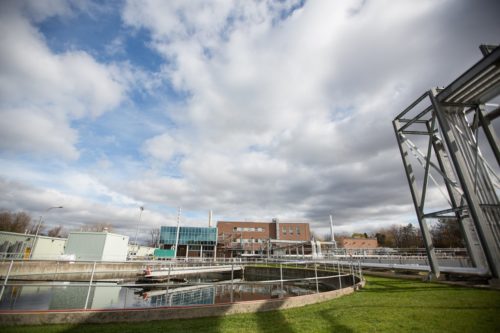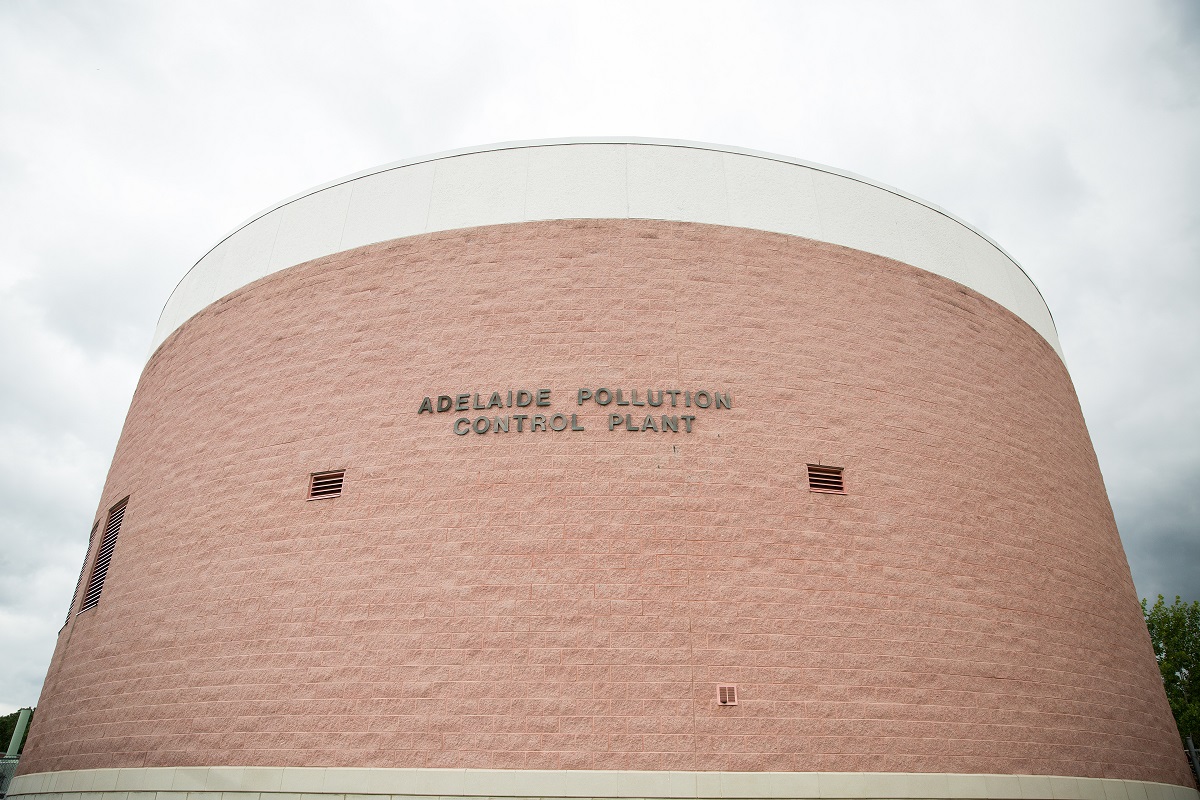In 2014, the City of London cut the ribbon of a new research and development facility at their Greenway wastewater treatment plant.
The City — in collaboration with the Ontario Water Consortium (OWC) and Western University — transformed an unused building into a site where water technology companies can test new systems in a real-world setting. Here, in secure, privately partitioned bays, innovators can access up to 4,500 cubic metres of flow a day, drawn from anywhere in the treatment process.
Since its opening, the facility has been solidly booked by companies eager to jump on the opportunities it offers. But it’s just one example of a fruitful collaboration between the City and the water industry that stretches back decades.
For Scott Mathers, the City’s Director of Water and Wastewater, collaborating with the private sector makes sense. Like municipalities across Ontario and around the world, London faces a host of challenges. They’re dealing with aging infrastructure, pressure to cut costs and shrink carbon footprints, and emerging contaminants like micro-plastics and endocrine disruptors. Plus, of course, the need to protect the health of humans and the environment.
As a result, Mathers is keenly interested in the latest solutions hitting the market. The challenge lies in deciding which ones to invest in. The City can’t afford to gamble tens of millions of taxpayer dollars on flash-in-the-pan technologies, he explains, or a vendor that disappears a few years down the road.
By opening up their plants to test innovation, Mathers gains insights he can’t get by flipping through a catalogue or listening to a sales rep. “When we actually get to see it in action, then we have a bit more certainty with it,” he says.
There are other benefits as well. Many of the companies who use the City’s facilities are local enterprises. By giving them an opportunity to prove their technology, the City contributes to their success — and hence the success of the local economy. On top of that, there’s the satisfaction of helping to advance technology that benefits the entire water sector.
Over the years, London has hosted numerous pilots at wastewater treatment plants across the city. At the Pottersberg facility, Trojan Technologies tested their advanced UV disinfection system. Hydromantis Environmental Software Solutions installed sensors in the Adelaide plant to gather data to improve their wastewater treatment simulation software. And at the Oxford plant, the City provided Suez Water with tanks to run a full-scale demonstration of their membrane bioreactor.
For companies like these, it’s a crucial opportunity to test their equipment using real wastewater flows, at scale. It resolves the catch-22 facing so many water industry innovators. No one will buy your product until you have demonstrated it can work at full scale and will be accepted by regulators. However, you can’t get that acceptance without real-world data that shows your technology works.

The Greenway Wastewater Treatment Plant in London, Ontario. Copyright: Ontario Water Consortium
According to Geordie Gauld, Division Manager for London’s wastewater treatment, providing access to plants isn’t onerous from an operational perspective. In the case of the demonstration facility at Greenway, Western University handles the applications from potential users, decides who qualifies, and schedules use of the testing bays. Attraction of new companies for pilots at the Greenway facility or at the City of London’s other sites is often facilitated by OWC.
What Gauld sees impresses him. “I wish I was starting my career now instead of winding it down,” he says. “I think the new technologies are going to be game-changers.”
He cites technology that can boost the rate of solids removal from primary clarification, others that can recover energy from sludge incineration and still others that enhance nutrient removal from effluent.
It all means municipalities will be able to treat more wastewater with less space. “We have one section of Greenway right now that currently treats 30 million litres a day,” says Gauld. “With that same footprint, we’re looking at being able to treat 100 million litres a day with the technology that’s out there right now.”
According to OWC Executive Director Brenda Lucas, municipalities have a key role to play in bringing these advances to market. “It is becoming more clear than ever that driving water technology innovations for 21st-century communities will require the active engagement and leadership of the communities themselves,” she says.
Having brokers like OWC makes a big difference, says Mathers. The Consortium creates opportunities for municipalities to sit down at the same table with water tech companies and have frank, open discussions about their needs and challenges.
“It’s nice to be able to do that in a format that’s very welcoming and safe,” he explains. “You’re not having a conversation directly with someone who is trying to sell you something. It’s a situation where we’re all just trying to find solutions to a common problem.”
And when that happens, municipalities and companies both win.


